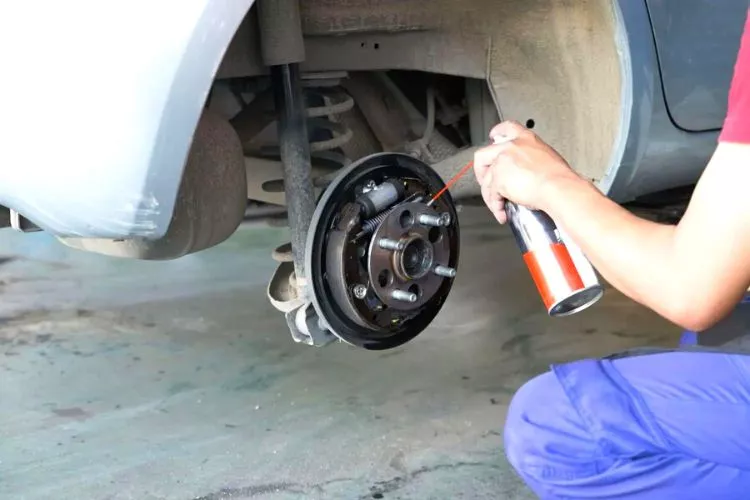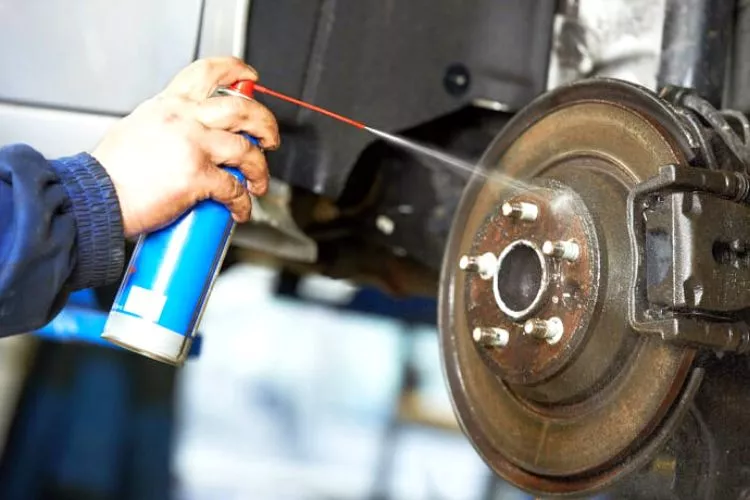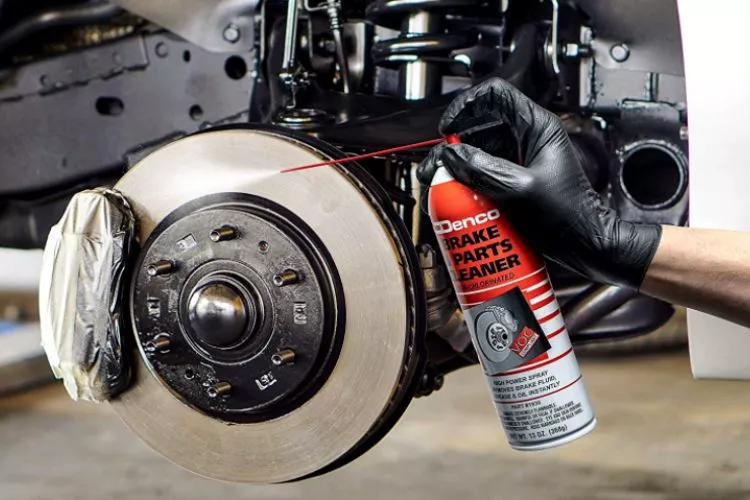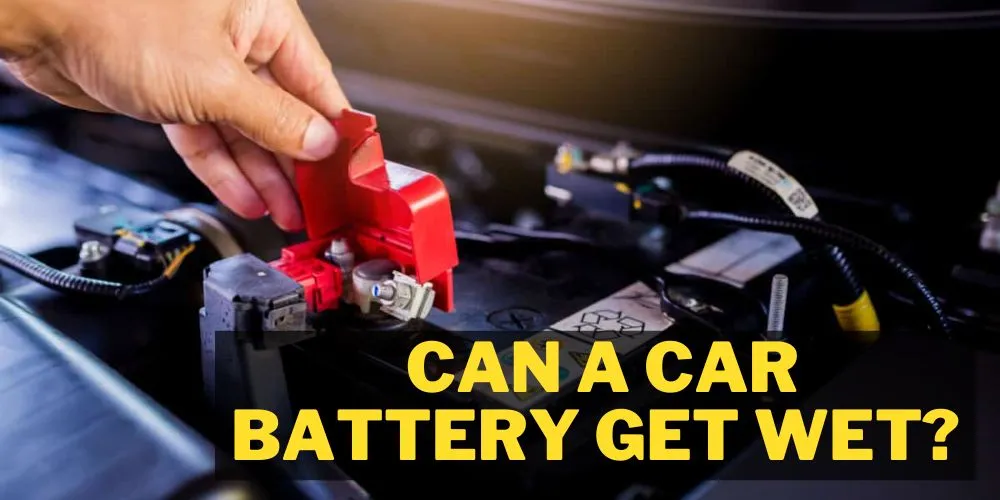Paint is a great way to add new life to any surface, but it can also be a chore to remove when it comes. We can use many things, but will brake cleaner remove paint?
Well, brake cleaners, which many people have in their garages or auto repair shops, can be used as effective paint removers. So to answer the question, yes, it can be used to remove paint effectively.
In this article, we’ll explore how brake cleaner works and if it’s safe to use on certain surfaces. We’ll explore the pros and cons of using brake cleaner to remove paint and give you some tips for doing so successfully. Read on to find out more about this handy product.

Contents
Will Brake Cleaner Remove Paint?
Brake cleaner is a chemical solvent used as an effective paint remover, typically a petroleum distillate or chlorinated hydrocarbons. It is often used to clean and degrease brakes, but it can also be advantageous in other areas, such as removing paint from cars.
Generally speaking, it will not damage the base material beneath the paint, though some surfaces, such as aluminum, may be affected by the degreasing qualities of the solvent. Using brake cleaner to remove paint works best when applied directly onto the painted surface and allowed to sit for around fifteen minutes.
This gives it time to dissolve the top layer of paint and allows you to scrape or wipe it away with a cloth. Some people use higher levels of acetone in certain brake cleaners to expedite the process.
However, remember that too much acetone can damage surfaces like plastic and rubber, so it’s important to check your product before use!
How Brake Cleaner Can Damage Car Paint?
The main reason brake cleaner can damage car paint is its chemical composition. Brake cleaner contains powerful solvents, such as acetone and toluene, which effectively dissolve grease, oil, and other contaminants from the surface of brake components.
However, these solvents can also dissolve the protective layer of wax and clear coat on car paint, causing it to become dull, discolored, or even stripped off.

Another factor that can contribute to the damage caused by brake cleaner is its high pressure when sprayed. The pressure can create tiny cracks in the clear coat or even remove it completely, exposing the underlying paint layer to a harsh environment. This can result in discoloration, peeling, and other damage that can be costly to repair.
To prevent damage to car paint, it is important to use brake cleaner only on the brake system and avoid spraying it directly on the car’s exterior. If the brake cleaner accidentally comes into contact with car paint, it should be immediately wiped off with a clean, dry cloth. Using wax or sealant is also recommended to protect the car’s paint from potential damage.
How brake cleaner affects different types of paint?
Paint comes in many forms, from oil-based to water-based, and each type of paint reacts differently to brake cleaner. Oil-based paints tend to be more resistant to the solvent, but you can usually get rid of it with enough time and effort.
In these cases, applying a heavy coating of the cleaner may help soften the paint so it can be wiped away. Water-based paints are generally easier to remove as they are more reactive to the solvent’s properties.
To successfully weaken the top layer of paint without damaging any underlying materials, a light layer of cleaner should do the job.

In addition to being careful about which surfaces you use brake cleaner on, you should also be mindful of how different paints will react.
For instance, some paints contain metal particles or adhesives that won’t dissolve in brake cleaner; however, this doesn’t mean it won’t work — just that you may have to apply multiple layers over a longer period to break down completely.
Lastly, while brake cleaners can remove most types of paint quite effectively, some specialty coats may not come off as easily. This includes industrial coatings like powder or epoxy coatings, which require high temperatures and specialized cleaning methods for them to be removed safely and correctly.
When dealing with these kinds of coats, it’s usually best to contact an expert for assistance rather than attempting to do the job yourself with brake cleaner.
What does brake cleaner remove?

Other Substances that Brake Cleaner Can Remove
Brake cleaner is a powerful solvent that can be used to remove various substances from various surfaces. Things like grease, oil, tar, wax, and dirt can all be quickly wiped away with the help of brake cleaner.
It’s important to note that different products will have different levels of effectiveness depending on what is being applied; some may need to be left on longer for it to do their job properly.
How Brake Cleaner Affects Plastics, Rubber, and Other Materials?
Though brake cleaner effectively removes many types of dirt and grime, you need to be careful when using it on certain materials such as plastics and rubber. The harsh chemicals present in some brake cleaners can damage delicate items such as plastic housing components or rubber weather stripping.
For this reason, it’s best to choose a product specifically designed for use with these materials to avoid accidentally causing any harm.
Why Brake Cleaner May or May Not Remove These Substances?
The effectiveness of brake cleaner on any given substance will depend largely on how long the chemical has been allowed to sit before wiping away. If you are applying the solution onto grease or oil that has been sitting for an extended period, then you might find that multiple applications are needed for the surface to become fully clean.
In addition, some substances may require specialized cleaning techniques to come off completely; this could include using wire brushes or bringing in professional services such as steam cleaning instead of relying on just brake cleaner alone.
Safety Precautions When Using Brake Cleaner
Why Safety Precautions are Necessary?
Brake cleaner is a powerful solvent that can cause harm to human health if misused. That’s why taking the necessary precautions when utilizing this product is important to ensure that your safety and that others around you are not compromised.
The Potential Health Hazards Associated With Brake Cleaners
Brake cleaner contains chemicals that can be hazardous if inhaled or ingested, so it’s very important to make sure you wear protective gear such as gloves and eyewear while using the product.
Additionally, brake cleaners contain volatile compounds that can irritate skin and lungs, so anyone handling the product should always avoid any contact with their eyes, nose, or mouth.
It’s also highly recommended that brake cleaner is used in well-ventilated areas away from sparks or flames, as these could potentially ignite the vapors released from the cleaner.
Tips For Handling And Using Brake Cleaner Safely
When dealing with brake cleaners, there are a few key tips you should keep in mind to reduce any potential risks:
- Make sure to read all instructions on labeling before use
- Wear protective gloves, goggles, and a face mask when applying the cleaner
- Use in a well-ventilated area away from sources of ignition
- Keep out of reach of children
- Dispose of any remaining product responsibly
Frequently Asked Questions (FAQs)
Q: Can you use brake cleaner on painted calipers?
Yes, you can use brake cleaner to clean painted calipers. However, it’s important to note that the harsh chemicals in the cleaner could strip away the paint if left on for too long. Therefore, it’s best to limit contact with the cleaner and focus only on cleaning the dirt and grime from the caliper. Additionally, it’s a good idea to wear protective goggles and gloves as an extra safety measure.
Q: Can you use brake cleaner to clean anything?
Brake cleaner is typically used on car parts such as brakes, clutches, and engines to remove grease, oil, tar, and other contaminants quickly; however, it can be used for other applications too. Its powerful solvent properties make it great for spot-cleaning upholstery, rugs, or floors; however, as always, you should ensure that any surface is compatible before using it to avoid any accidental damage.
Q: Is brake Cleaner just a degreaser?
No, brake cleaner is not just a degreaser because it has additional cleaning capabilities. It’s capable of dissolving grease and oil and waxes, tar, and other contaminants, making it a highly versatile product when used correctly.
Conclusion:
Brake cleaner is a powerful product that should be handled with care and caution. While it can be used to clean painted calipers, its harsh chemicals can potentially strip away the paint if left on for too long.
Therefore, it’s important to read the instructions on the label before use and only focus on cleaning dirt and grime while avoiding contact with any painted surfaces. Protective gear such as gloves and safety goggles should also be worn when handling this product.


